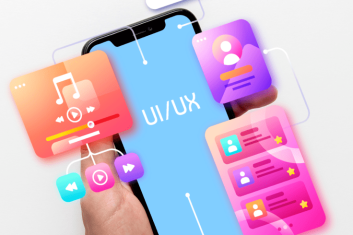When the pandemic was officially declared as such in March, clinical training for many students — future healthcare professionals — came to a halt. Colleges, hospitals, and other medical facilities canceled partnered clinical placements to ensure that students and patients were protected from the virus.
These facilities, faced with shrinking stocks of personal protective equipment, or PPE, such as masks and protective suits, saved these supplies for essential workers.
The healthcare education industry has turned to alternative means of communication to continue teaching no matter what. Now there are telehealth, AR/VR applications, and other tools of modern education used for the healthcare industry. Let’s explore some of these.
5 edtech tools for healthcare
We selected the most promising technologies that will become even popular in 2021. Here they are.

Top 5 education tools for healthcare
Telemedicine
Telemedicine is a great way to deliver patient care, caregiver and patient education, with the help of tech and digital services: video calls, mobile health apps, Remote Patient Monitoring devices, and so on.
Today telemedicine is popular as never before, with the 2020 pandemic greatly boosting the use of telemedicine tools.
According to statistics, about 44% of Medicare primary care visits in April 2020 were conducted with the help of telehealth methods. This happened because in-person visits were considered risky to the health of both patients and caregivers.
Need an e-learning solution for healthcare?
We are ready to help you. Just contact us to get a personal proposal on software development.
Julia Tuskal
Head of Sales
at HQSoftware
This led to increased demand for digital services and communication tools, which telehealth easily provides.
How is telehealth being used to train caregivers right now?
One example comes from Arkansas, where programs such as Antenatal and Neonatal Guidelines, Learning System, and PedsPLACE connect healthcare facilities in the US state through telemedicine conferences every week. They also provide 24/7 consultation, which greatly reduces the costs of healthcare workers’ education and improves care efficiency.
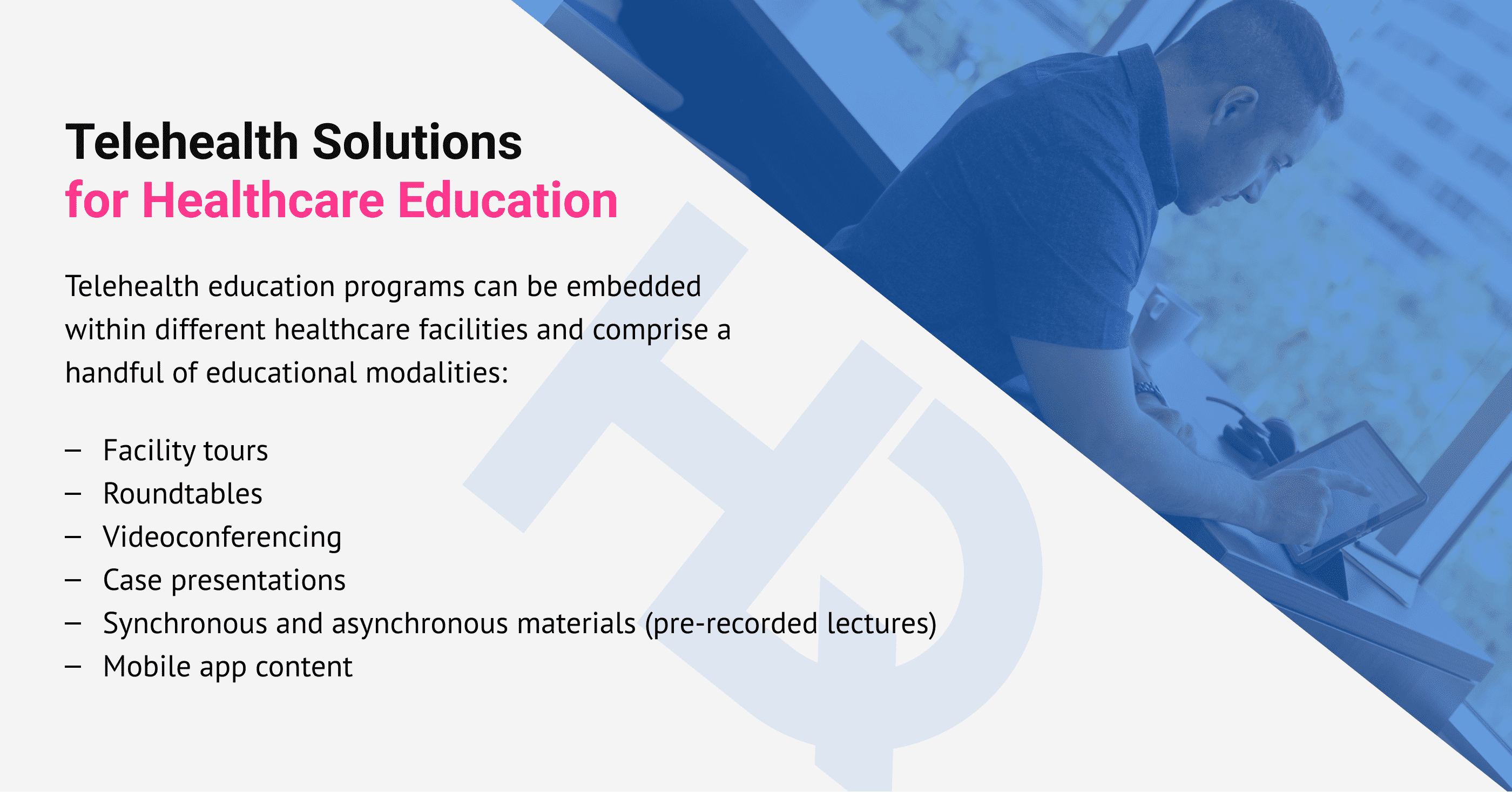
Telehealth solutions for healthcare education.
Telehealth education programs can be embedded within healthcare facilities and comprise a handful of educational modalities:
- Facility tours
- Roundtables
- Videoconferencing
- Case presentations
- Synchronous and asynchronous materials (pre-recorded lectures)
- Mobile app content
Educational programming can be personalized for each user; this is extremely easy to do, since all educational material is digital.
Up to 86% of medical students enrolled in telemedicine education in 2020 say they consider telehealth to be one of the major tools they will use in their future practice as doctors. Telehealth is booming and the market seems likely to break $185.6 billion by 2026.
Telehealth is a versatile tool that can be used to educate patients as well as provide care; patient education is an important part of the treatment of chronic illnesses.
Information from professional caregivers delivered via telehealth helps patients take a more active role in their own health management. Telehealth can reduce or even eliminate the need to conduct face-to-face meetings to educate patients. This will save time for both doctors and patients while providing vital information.
But there are some innovations required for telehealth to be fully adopted as part of healthcare education:
- Scalable online simulations that can be processed by low-end computers as well as modern models;
- Simple, user-friendly hardware and software interface, e.g. for videoconferencing systems;
- Easy-to-use and portable telepresence systems;
- Remote 3D visualization;

Innovations required for telehealth
These technological improvements are not unattainable. The majority of these features could be developed right now, and the rest just need a year or two for the technology to evolve.
Online education
Some vital parts of the healthcare world already have gone digital: electronic health records, checkups, appointment-setting apps, and so on. It’s only natural that some kinds of educational events would go online as well.
Online education for healthcare specialists can be divided into two categories:
- Traditional events that have moved online. Imagine a healthcare conference with dozens of speakers, lots of hardware, a large rented facility. This is expensive and for attendees involves not only registration fees but often travel and accommodation. Compare this to online events, which :are cheaper and easier to organize, less expensive for participants, and easier for speakers to attend. They also offer an advantage for attendees in that they can listen to multiple lectures one by one without having to choose between them.
- Online courses. World-renowned universities and colleges often build their own courses with healthcare professionals, to publish them online on their website or popular platforms. For example, there are plenty of courses on epidemics, viruses, and nutrition on edX. Another option is to create online courses and provide them directly to students or post them on the company’s intranet for secure and managed access.
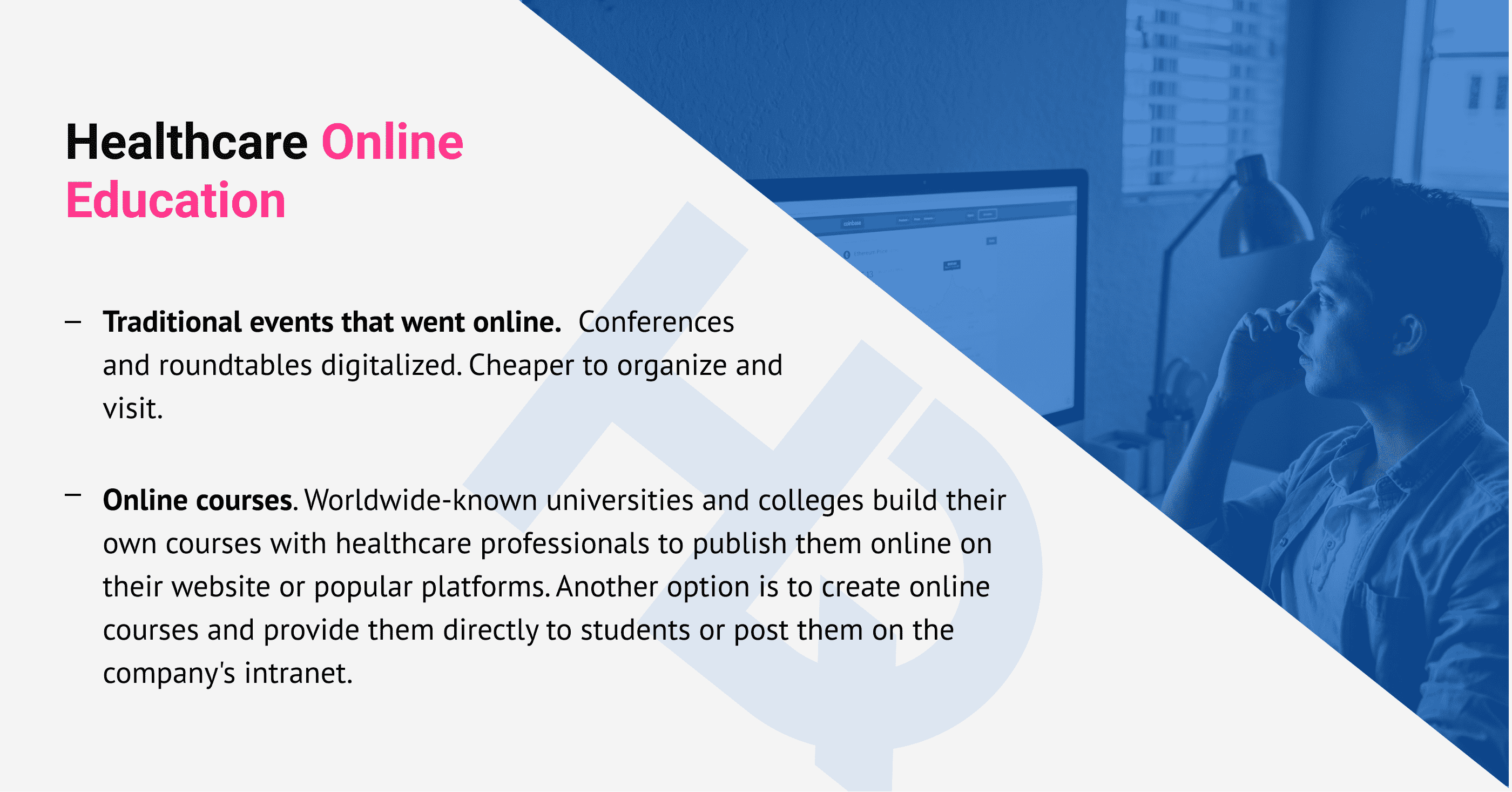
Online education for healthcare.
Some healthcare facilities that have lots of students to teach may want to develop an online e-learning platform of their own, which is a rather good deal. According to Technavio’s research, the healthcare education solutions market is expected to grow by $5.1 billion by 2024, indicating its current popularity.
For a good software development company, it is easy to develop a healthcare e-learning solution that will suit any healthcare business. Just look for a company with relevant experience.
AR/VR education
Education with the help of immersive technologies such as Augmented and Virtual Reality is a relatively new thing in healthcare. Those who have tried these technologies say the experience is one-of-a-kind.
AR/VR technologies provide the opportunity to recreate real-life scenarios that students can interact with. It is applied widely in several fields, including nursing and surgical.
For example, a VR surgical simulator can recreate an actual operation and help students train within virtual surroundings. The skills improved during a virtual surgery will reduce the chance of committing errors in an actual surgery. Some already on the market include Osso VR and Fundamental Surgery.
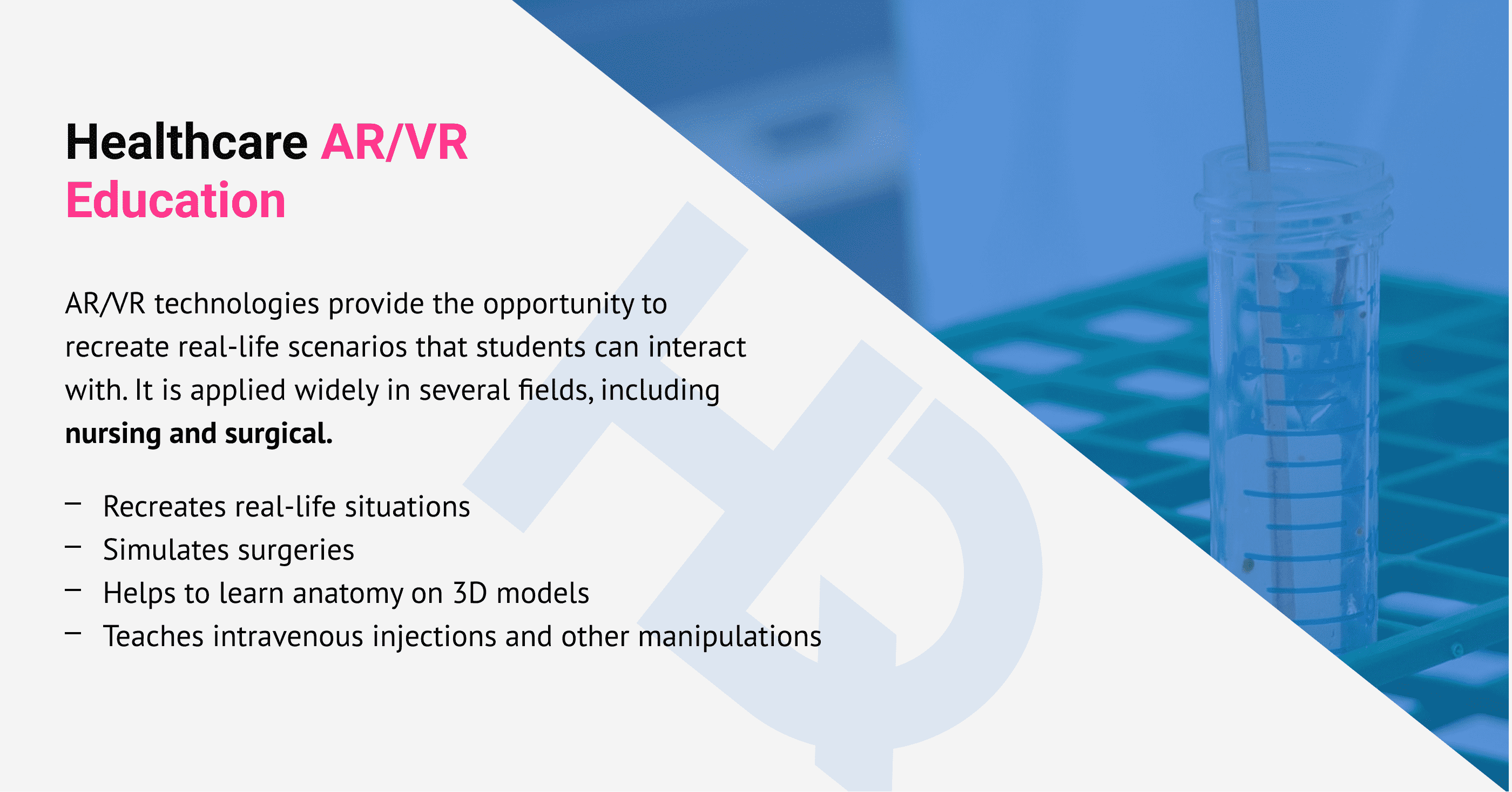
AR/VR education for healthcare.
AR/VR is also used to teach human anatomy: interactive 3D models that students can move and zoom help them better understand the relative positions of the organs.
AR/VR can also be applied to teaching how to give intravenous injections. The penetration of needles of different thickness into the patient’s arm can be simulated with incredibly fine detail, and even produce haptic feedback through hardware. Students can see and feel what they are doing without harm to an actual patient.
What other AR/VR solutions can be developed to teach caregivers? The list of possible simulations goes on:
- Subcutaneous injection
- Bronchoscopy surgery
- Sigmoidoscopy operation
- Ovulation ligation surgery
- Endoscopy
- Laparoscopy
- Catheter treatment, and even more
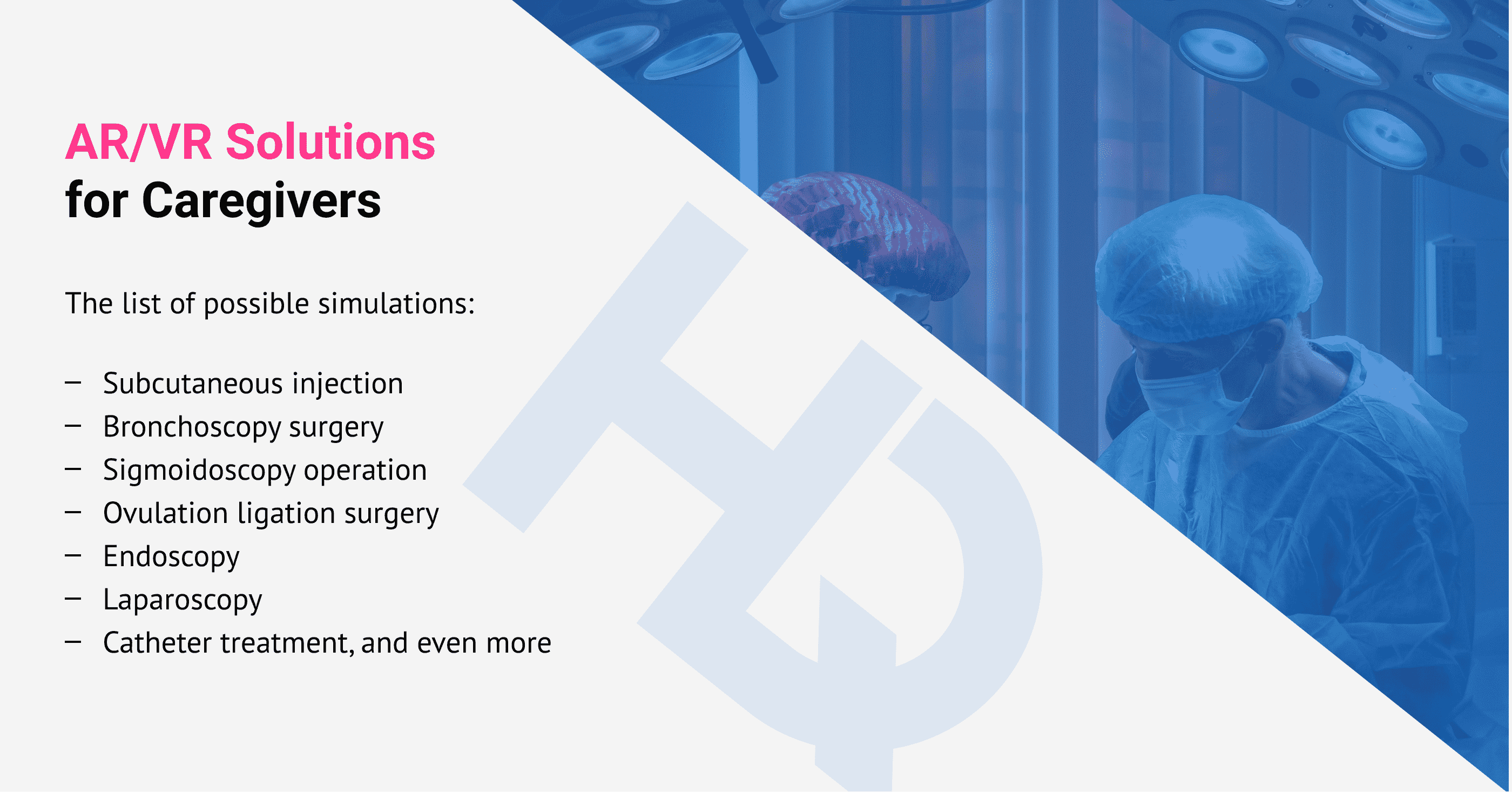
AR/VR solutions for caregivers.
AI learning
This is another powerful technology that can help future doctors hone their skills. Artificial Intelligence can be used to build a “digital tutor” for students. Its role is to create a digital learning environment that will help them memorize and comprehend information better than traditional means of education.
AI-based educational apps can provide individual revisions, build educational plans based on student information: their interests, education advancements, subjects they need to learn, and more.
AI can also greatly help in producing content:
- Create digital lessons. Digital textbooks, guides, even whole lessons can be generated with AI.
- Visualize information. Web-based study environments, data visualization, and creation of visual simulations can all be powered with AI.
- Update learning content. AI can automatically update and change the contents of the course when some information becomes outdated or the learning curve changes.

AI education tools for healthcare.
AI can also free instructors from time-consuming routine activities such as creating tests, checking results, and checking papers for plagiarism. That lets instructors spend their valuable time concentrating on more human-specific skills like creativity and emotional intelligence.
The application of AI in education is still on a low level, yet the potential of this technology is overwhelming. In the US, it is expected that up to 50% of classrooms will start using AI in the next 3 years.
Mobile applications
On average, training in the healthcare sector is unique because there is always new research to consider, new facts and skills to teach students, new and emerging best practices, and so on. Add the fact that the healthcare industry is highly regulated, and healthcare educators are facing complicated challenges.
However, mobile learning is still the most convenient way to acquire knowledge on the go. Healthcare professionals’ time is priceless, and it is better to spend it on helping patients rather than traveling to some educational facility or having to obtain special hardware to access information.
M-learning is also the fastest growing area of all e-learning technologies. The potential of mobile learning in the healthcare industry is huge; it is a means of providing all healthcare professionals with a flexible and accessible tool for learning.
A mobile device is an access point for other e-learning technologies, too, such as AR/VR learning, telemedicine, online education platforms, and so on.
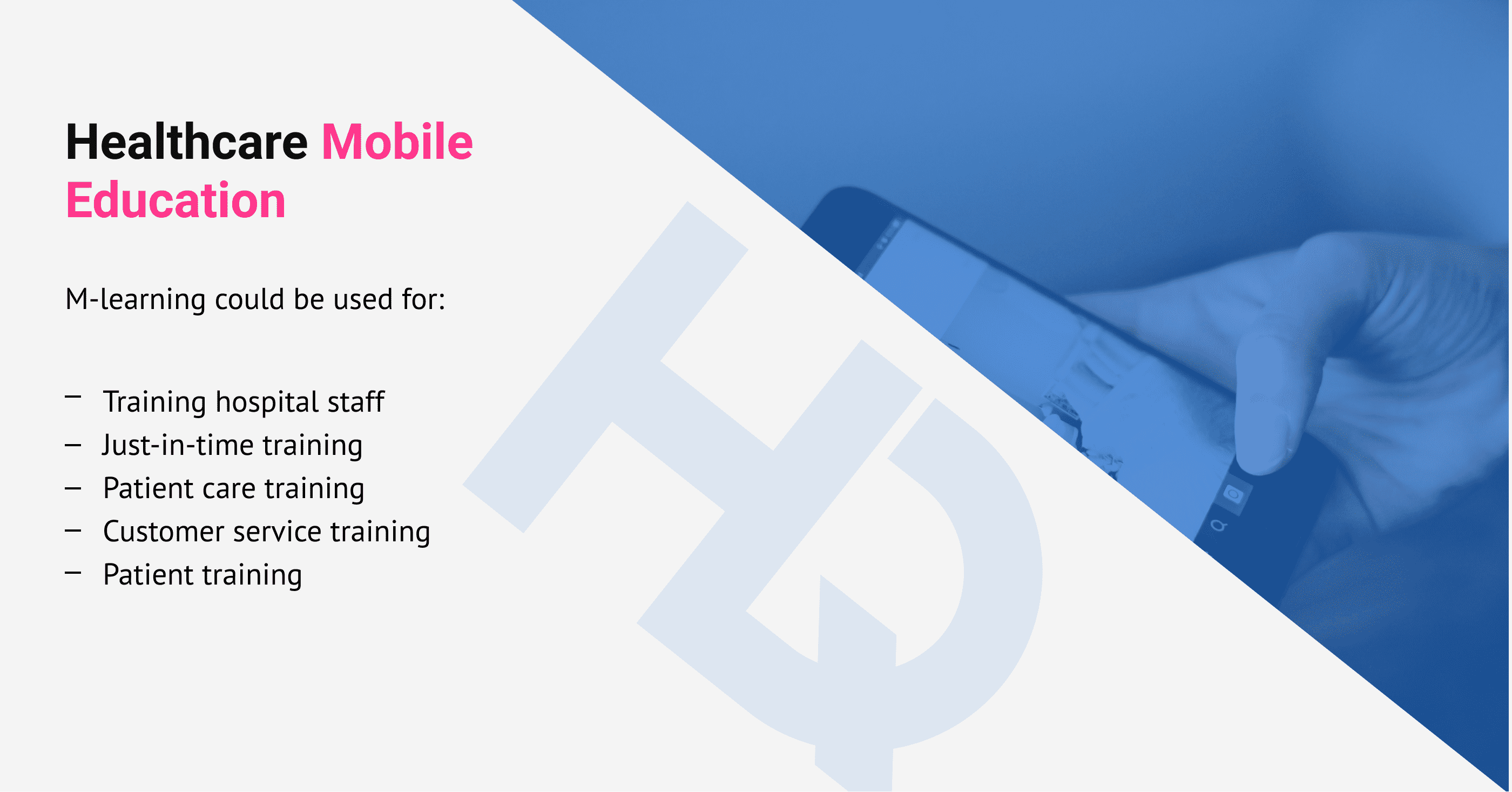
AR/VR solutions for caregivers.
M-learning could be used for:
- Training hospital staff
- Just-in-time training
- Patient care training
- Customer service training
- Patient training
To assess the potential of mobile applications for healthcare education, just take a look at some of the most popular apps for inspiration. With the right vendor, you can develop something similar easily:
- WebMD Pain Coach. This is mostly a patient-education app; it allows the patient to enter symptoms, helps detect a potential condition causing pain, and finds the nearest appropriate physician, depending on geolocation.
- Micromedex Drug Reference Essentials. This is an all-in-one drug guide for nurses; it provides access to information about close to 4,500 drugs offline, including described side effects and dosage.
- Leap. This application works even on old phones and provides learners with information via SMS, which is an important feature for the developing world and countries with low income levels. The app delivers healthcare educational content, has content customization features, peer training, and learning process management. With this app, caregivers can get multilingual instructions and learning content wherever they are.
To sum up
To build efficient healthcare education software, developers need to collaborate with healthcare businesses and professionals to understand all needs of the industry. Strategic partnerships with software development vendors are vital for the technological development of healthcare providers and the advanced education of specialists.
The tech industry has a number of efficient tools to build healthcare e-learning solutions. They all contribute to better student engagement and easy content delivery, saving money and precious time:
- Telemedicine
- Online education
- AR/VR
- AI
- Mobile apps

Founder
Hey! Welcome to our blog!
The topics we cover include IoT, AR/VR, related news, and our projects.If you’d
like to discuss an article, please
messsage
me on LinkedIn
Related Posts
View All
We are open to seeing your business needs and determining the best solution. Complete this form, and receive a free personalized proposal from your dedicated manager.

Sergei Vardomatski
Founder


